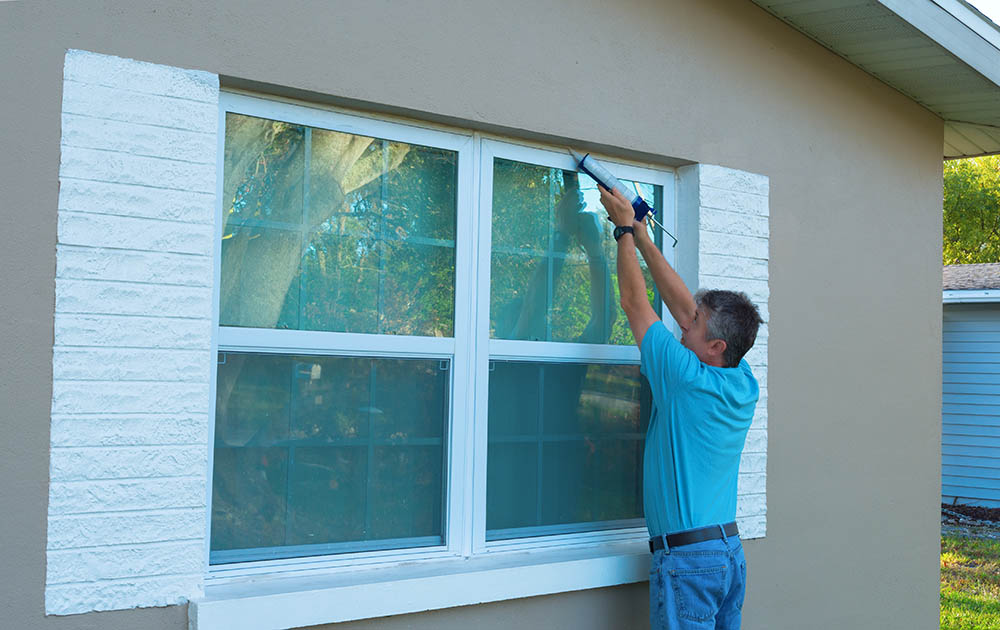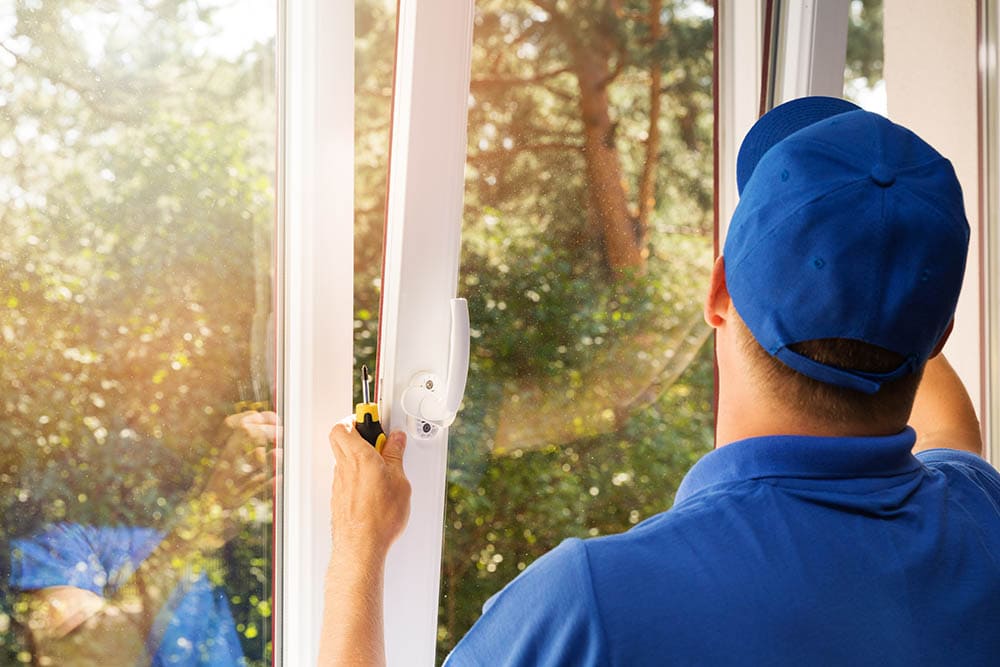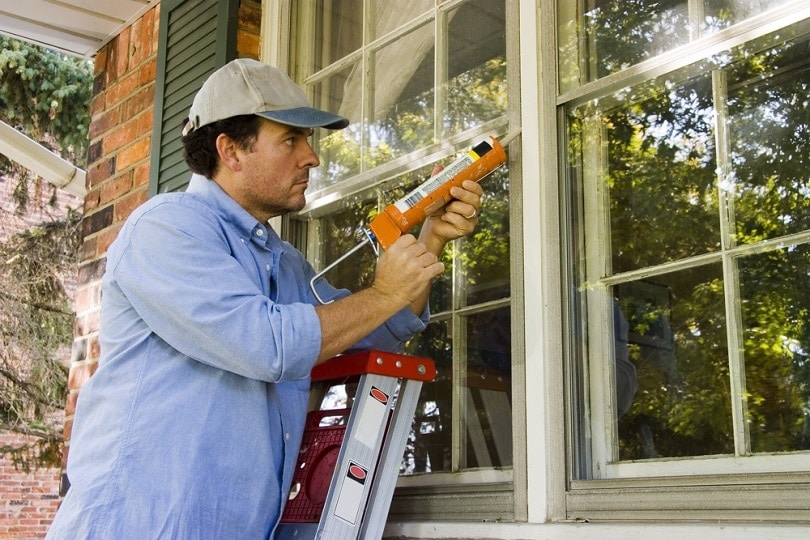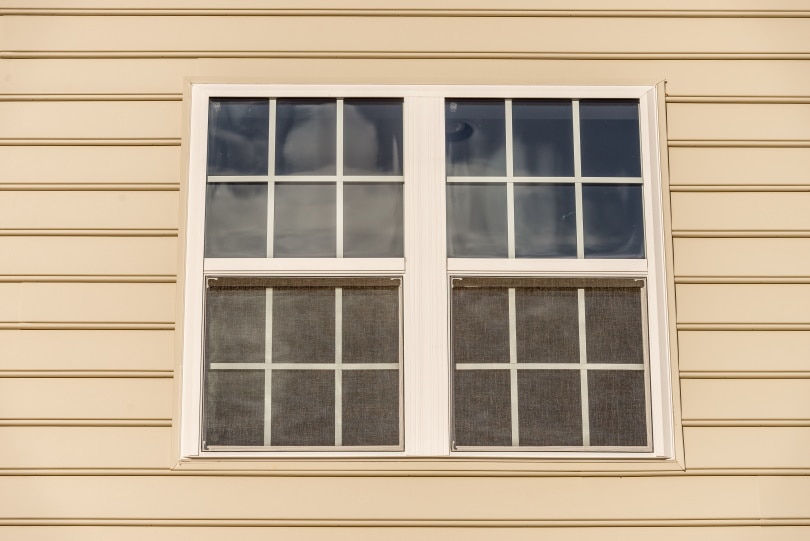What Is a Storm Window? Advantages, Disadvantages, & FAQ
-

- Last updated:

Did you know that one of the primary things you can do to improve energy efficiency in your home is something people don’t often think about? Address your window problem. Traditional single-pane windows tend to be drafty. One traditional remedy to this is to get dual-pane windows. Whereas single-panes let heat out and cold air in, while your central heating is working overtime to compensate for this, dual-pane windows help address the issue.
Instead of losing heat, dual panes trap the cold air between the two panes during cold seasons and trap the hot air during summer. But this might not always be the best solution. A more economical solution is to get storm windows: separate windowpanes installed inside or outside of preexisting windows.
How Does it Work?
Prior to 1980, most homes in the United States were built with single-pane windows, even though most building codes nowadays require dual-panes windows. Storm windows are cheaper to install than removing drafty single-panes and replacing them with dual-panes.
When storm windows are installed, they’re screwed into the mold or blind stop as well as the preexisting windowpane. The extra pane provides a layer of insulation so that you can maintain the desired temperature in your home, but most models can be opened or closed.

What are the Different Types of Storm Windows?
- Exterior Storm Windows: Windowpanes that are placed on the outside of single-pane windows. They can be made of wood, aluminum, or vinyl. Aluminum is typically not recommended because it provides relatively little insulation.
- Interior Storm Windows: Interior storm windows are ideal for apartments or homes with multiple levels where access can be difficult. Made from plastic or acrylic, they are lightweight and easy to install, usually with compression or magnets. They are affordable as well.
- Temporary Storm Windows: These are usually disposable and last only for one or two seasons. Sometimes they are made from a plastic or wooden frame and are often merely a film placed on the window’s interior side. Heat is applied so that it shrinks and acquires a tight seal.
- Wood Frame Storm Windows: These are the older style frames that were most common 50 years ago. They work well for insulation during cold months, but because they are made of wood, they expand and contract with heat. For this reason, they should be removed sometime during the spring, so they are not exposed to radical temperature differences.
- Low-E Storm Windows: Low-E (low emissivity) is a designation of a type of glass that has been treated with metallic oxide. This creates a coating that reflects heat back to its source so that harmful UV rays and excess heat cannot pass through. It can be used with any number of framing materials.

Where is it Used?
Storm windows are most commonly used in older homes. Most homes built in the last 40 years are made with dual-pane windows that have better insulation than single-panes. Instead of paying a window company to come out and potentially take apart the side paneling of your house to remove the entire window, an additional pane can be added on the outside or inside of your window, saving you money in the long run. Dual-pane windows do not require storm windows. Quality-built dual-panes provide all the comfort and security that you need. These days more than ever, Low-E storm windows have become the favorite primarily due to the emphasis on energy conservation.
Advantages of Storm Windows
- Temperature Control: The primary advantage we have already discussed is that storm windows prevent drafts and help maintain the home’s internal temperature.
- Noise Reduction: Even though storm windows are often installed to address heating and cooling problems, many of them also provide the benefit of reducing noise from the outside.
- Economic: With just a tiny fraction of the cost of replacing your entire window, you can install storm windows yourself with easy-to-follow instructions from most manufacturers. In addition to installation costs, with low-e storm windows, you can save anywhere between 10-30% on heating and cooling.

Disadvantages of Storm Windows
Most storm windows that are installed currently benefit the consumer, but there are still many storm windows in use that are older and less efficient.
- Wear: Older wood frame storm windows need to be replaced more often than acrylic or aluminum windows. When they are exposed to foul weather, they tend to warp and rot due to excess moisture.
- Cleaning and Poor Ventilation: Older storm windows need to be removed every springtime to get fresh air in the home. Since wood is more porous than metal, moisture and mildew will inevitably develop between the panes.
 Frequently Asked Questions (FAQs)
Frequently Asked Questions (FAQs)
Are Storm Windows Waterproof?
Even though storm windows are meant to handle inclement weather, they are not waterproof. Nearly all windows allow some level of moisture through. Even though they aren’t waterproof, they can be described as water-resistant and resistant to impact. They can stand up to hard rains and winds without getting damaged.

How Often Do Storm Windows Need to Be Replaced?
Some of the most common storm windows are made of aluminum. While their main drawback is that they retain heat during the summer months, they need very little maintenance and can last 20–40 years if you are careful with them. Vinyl storm windows can last up to 20 years. Wood, even though we have said it tends to warp, can last much longer than other materials (even up to 100 years), especially if it is wrapped with aluminum or vinyl for additional protection.
Are Storm Windows Better than Double-Pane Windows?
The short answer is that they are about equal. The primary advantage of storm windows is that they are more affordable and easier to install over a single pane. If you have dual-paned windows, there is no need to get a storm window.

Conclusion
There’s an old country myth that drafts on their own make you sick. Whether or not this is true, there is a lot of conventional wisdom in the warnings against drafts. They are unpleasant during the winter, and not having a good seal can also make your air conditioning work overtime in the summer. If you have single-pane windows, consider getting a storm window to improve efficiency and comfort in your home.
Featured Image Credit: Michael OKeene, Shutterstock
Contents

